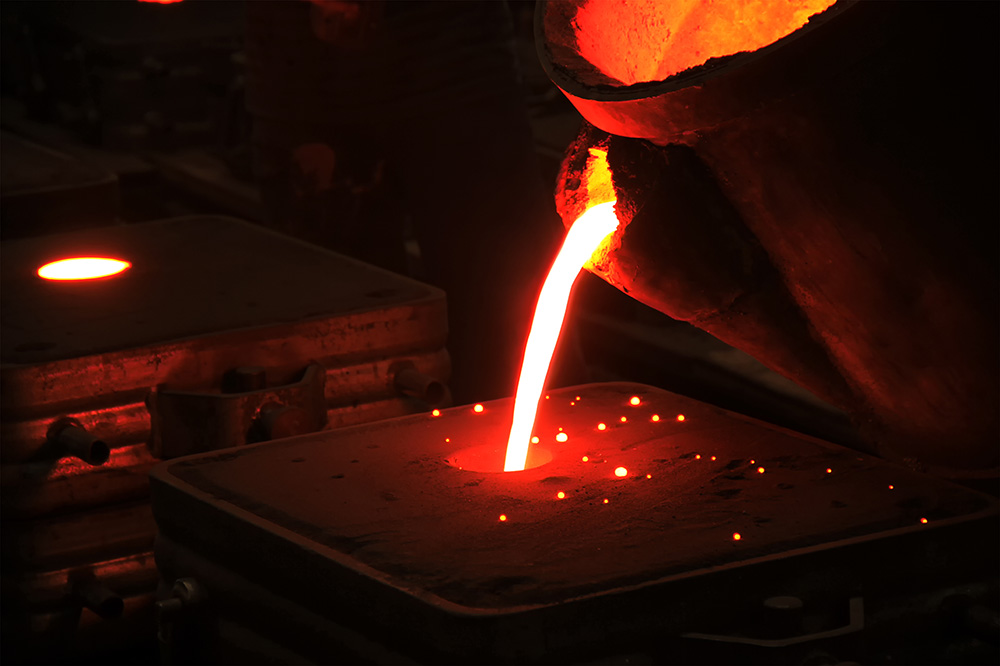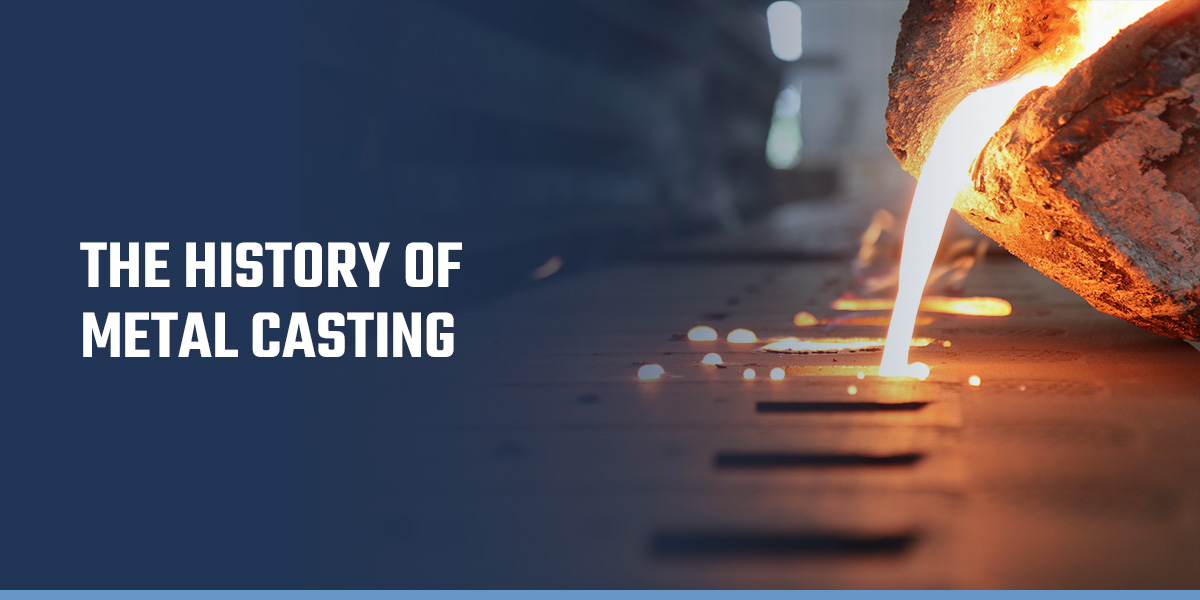The craft of Aluminum Foundry and its role in modern manufacturing
Wiki Article
A Deep Dive Into the Various Sorts Of Metal Casting and Their Utilizes
Metal Casting includes numerous methods, each tailored for certain applications and needs. From the affordable sand casting approach to the precision of investment casting, each process has one-of-a-kind benefits. Pass away casting sticks out in high-volume production circumstances, while lost foam spreading introduces cutting-edge style opportunities. In addition, irreversible mold and mildew casting is acknowledged for its sturdiness. Understanding these techniques opens a window right into their sensible usages and implications in numerous industries. What lies beneath the surface of these casting methods?Sand Spreading: A Cost-efficient and versatile Method
Although various casting approaches exist, sand casting continues to be among one of the most cost-effective and functional strategies in the metalworking sector. This approach employs a combination of sand and a binding representative to develop mold and mildews, enabling the manufacturing of components in diverse shapes and sizes. Sand spreading is particularly helpful for tiny to tool manufacturing runs, as it requires marginal upfront financial investment in tooling contrasted to various other spreading techniques.The process begins with the creation of a mold and mildew, where liquified steel is gathered to form the preferred item as soon as cooled down. Its versatility makes it possible for using different metals, including iron, light weight aluminum, and steel. Additionally, sand casting can accommodate intricate geometries, making it suitable for a range of applications, from auto components to intricate imaginative items. On the whole, sand casting's effectiveness and flexibility solidify its value in the manufacturing landscape.
Investment Spreading: Precision and Detail for Complicated Forms
Financial investment spreading sticks out as an approach renowned for its capacity to generate highly detailed and elaborate elements. This procedure entails creating a wax pattern that is coated with a ceramic shell, which is after that warmed to eliminate the wax and set the shell. The outcome is a precise mold that can capture complicated geometric shapes with exceptional accuracy.This casting technique is specifically helpful for producing parts with thin walls, fine attributes, and limited resistances, making it ideal for sectors such as aerospace, automobile, and medical gadgets. Financial investment casting accommodates a range of metals, consisting of stainless-steel, aluminum, and titanium, enabling suppliers to satisfy particular material requirements.
The procedure minimizes machining requirements post-casting, which can boost performance and decrease manufacturing costs. On the whole, financial investment casting is a recommended option for applications where precision and detail are critical.
Die Casting: High-Volume Manufacturing With Excellent Surface Finish

Pass away casting is an extremely reliable production procedure that masters producing large volumes of steel components with remarkable surface coatings. This technique entails forcing molten metal into a mold dental caries under high pressure, permitting fast production cycles and harmony in the completed items. Commonly made use of materials consist of zinc, magnesium, and light weight aluminum, which provide excellent mechanical properties and deterioration resistance.
Pass away casting is specifically advantageous for markets such as auto, electronics, and customer items, where accuracy and quality are critical. The procedure allows intricate designs, reducing the requirement for additional machining and completing processes. Furthermore, the smooth surface areas created via die spreading typically call for marginal post-processing, resulting in reduced total manufacturing costs. As a high-volume manufacturing method, pass away spreading is suitable for producers seeking performance without endangering on top quality, making it a favored choice for plenty of applications across various sectors.
Lost Foam Casting: Cutting-edge Strategy for Intricate Designs
Lost foam casting changes the manufacturing of complicated steel parts by utilizing a distinct procedure that removes the requirement for conventional molds. Rather directory of traditional mold-making, this technique employs a foam pattern that is covered with a refractory product. When the pattern is set, liquified steel is poured straight into the mold and mildew, triggering the foam to leave and vaporize behind an accurate tooth cavity for the steel to fill. This cutting-edge technique permits for elaborate layouts and in-depth features that might be testing to accomplish with other casting techniques.In addition, shed foam casting can reduce waste and power usage, making it an eco-friendly option. Industries such as automobile and aerospace benefit greatly from this strategy, as it sustains the development of light-weight components with complicated geometries. Overall, lost foam casting stands apart for its capability to provide premium, personalized steel components efficiently.
Long-term Mold Casting: Longevity and Consistency in Metal Parts
Permanent mold casting is a highly efficient approach for producing resilient and regular steel components, leveraging multiple-use mold and mildews that are typically made from metals such as iron or steel. This casting procedure involves putting liquified metal right into these mold and mildews, which are preheated to boost product quality and lower defects. The usage of multiple-use mold and mildews not only minimizes waste but likewise permits greater production rates, making it economically useful for makers.The resulting components show outstanding dimensional accuracy and surface finish, making them ideal for applications in automobile, aerospace, and industrial equipment. In addition, irreversible mold and mildew spreading can fit a range of alloys, even more broadening its adaptability. The toughness of the actors components is improved as a result of the controlled cooling prices that promote better grain frameworks. In general, this spreading method stands apart for its capacity to generate top quality metal parts that meet extensive performance standards, making sure reliability popular settings.
Regularly Asked Questions
What Products Can Be Used in Various Metal Casting Processes?

Numerous materials can be made use of in Metal Casting processes, including aluminum, bronze, zinc, and iron. Each product uses one-of-a-kind residential or commercial properties, influencing the casting approach's performance, stamina, and viability for different applications in production.
How Do Casting Methods Influence the Mechanical Characteristics of Metals?
Casting methods significantly affect the mechanical buildings of steels, influencing elements like stamina, solidity, and ductility. Variations in cooling prices and mold materials can bring about various microstructures, ultimately affecting the efficiency of the end product.What Are the Environmental Influences of Metal Casting Processes?
Metal Casting procedures can result in air and water pollution, source depletion, and considerable energy intake (Metal Castings). Additionally, the generation of waste products and greenhouse gas emissions greatly influences the atmosphere and adds to climate adjustmentJust how Do You Select the Right Spreading Approach for a Project?
Choosing the appropriate casting approach involves reviewing job requirements, product residential official statement properties, intricacy, and production quantity. Elements like expense performance, finish high quality, and lead time likewise play vital roles in identifying one of the most ideal approach.What Safety Precautions Should Be Taken Throughout Metal Casting Operations?
During Metal Casting procedures, safety and security preventative measures include using protective gear, guaranteeing appropriate air flow, performing tools assessments, maintaining a clean work space, and having emergency procedures in place to handle potential dangers like burns or hazardous fumes.From the cost-effective sand casting technique to the precision of investment casting, each process has special advantages. Die spreading is a highly effective manufacturing process that excels in producing huge quantities of steel parts with exceptional surface area finishes. Lost foam spreading changes the manufacturing of complex metal components by using a distinct process that gets rid of the demand for traditional molds (Metal Castings). Permanent mold and mildew casting is a very reliable method for producing constant and click here for more info durable metal parts, leveraging reusable molds that are generally made from steels such as iron or steel. Different products can be utilized in Metal Casting processes, consisting of light weight aluminum, iron, bronze, and zinc
Report this wiki page